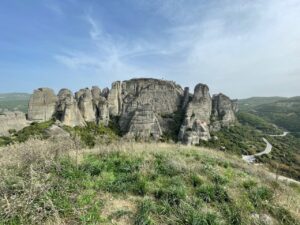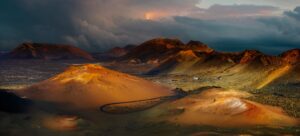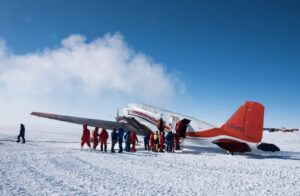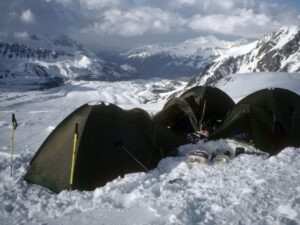It’s a depressing time for outdoor types. Forest fires in Indonesia have turned skies across Southeast Asia blood red. The populist new Brazilian President has decided it’s time to open up the Amazon to agriculture, mining and “development.” In the Alps, a glacier is in danger of collapsing, and in Iceland, a funeral was held for another. Not content to cover the world’s highest point with trash, we’ve somehow managed to deposit a plastic bag 10,994m down in the Mariana Trench, the world’s deepest point.
So, is anything left untouched? What has become of our planet’s wilderness areas? The dictionary definition of a wilderness is “an uncultivated, uninhabited, and inhospitable region.” Ignoring the more subjective inhospitable tag, I made a plausible list of the world’s wildernesses. Here’s what I came up with:
Antarctica, the Sahara, the Amazon, the Congo, northern Scandinavia, Siberia and large parts of the Russian taiga, the Canadian Arctic, Alaska, the Empty Quarter, the Australian Outback, the Altun mountains and Taklamakan Desert of Xinjiang, Papua New Guinea’s deep jungle and, more tentatively, inland Madagascar, the Okavango Delta and the Pamirs.
But how many of these are actually still wildernesses in 2019?

A moonscape in the high Pamirs, Tajikistan. Photo: Martin Walsh
Last year, a team from the University of Queensland finished a comprehensive study charting the world’s remaining terrestrial wilderness and intact ocean ecosystems. The results weren’t pretty. Excluding Antarctica, human activity has modified more than 77% of land and 87% of the ocean. The remaining 23% of terrestrial wilderness may not last long. Between 1993 and 2009, a wilderness area larger than India was lost to “human settlement, farming, mining and other pressures.”
Their map is eye-opening. Just five countries hold 70% of the world’s remaining wilderness:

Photo: Nature
Many areas on my impromptu list didn’t make their cut. Those that did are smaller and more fragmented than I imagined. Northern Scandinavia barely registers any more. Countries like Sweden may have low population densities, but much of the land is still managed. Even in the far north, the Sámi people cultivate huge reindeer herds using snowmobiles and even helicopters.
The boreal forests of Russia, Canada and Alaska are well represented, but the world’s jungles haven’t fared so well. Jungles represent some of the most biodiverse ecosystems but have had a rough time of it. In the nineteenth century, the Congo rainforest and its inhabitants were ruthlessly exploited under the horrific King Leopold II, and the region has endured civil war and repression since independence. Colonialism never truly left: It just adopted a new guise as free-market capitalism, with global corporations bleeding the country dry. If you own a smartphone, there’s a good chance that some of its key materials, such as tantalum and cobalt, were extracted from the Congo under morally dubious circumstances. Considering the Congo’s rich natural resources, it’s not surprising that this once-vast jungle is no longer a wilderness.
At the start of the 20th century, my adopted home country of Vietnam was so wild that rumours of a half-ape, half-human species (nguoi rung, or jungle people) were thought to suggest a missing link. (If it existed, it was more likely a species of Great Ape than a lost colony of Homo erectus). As recently as 1997, two new large mammalian species were discovered, a type of muntjac deer and the saola, or “Asian Unicorn.”

At least 50% of the world’s forests have disappeared. Dalat, Vietnam. Photo: Martin Walsh
But Vietnam’s forests have been decimated. Wars with China and France merged into a devastating war with the U.S. In a desperate effort to halt Viet Cong advances, the U.S. carpet-bombed the Vietnamese jungle with napalm and the defoliant, Agent Orange. They wiped out huge tracts of Vietnam’s forests and caused generations of horrific birth defects in humans.
Since then, a population boom has put further pressures on the remaining wild spaces. Farms and villages have replaced forest, and rampant poaching is sure to cause mass extinctions. Vietnam’s last Javan Rhino perished from an AK-47 bullet in 2010. Tigers aren’t officially extinct (supposedly, five remain) but they have disappeared from the wild for at least a decade. Only an estimated 50 wild elephants remain.
Madagascar has just 3% of its dry forest remaining, while Papua New Guinea is losing an estimated 1.4% of its fragile jungle per year, largely due to illegal logging.

One of under 4,000 tigers remaining in the wild. A rare sighting, on foot in Nepal. Photo: Martin Walsh
In Brazil, humans have long gnawed away at the Amazon, slowly fragmenting the mighty jungle. Now, under the Brazilian version of Trump, President Jair Bolsonaro, the pace of destruction has jumped. Amazon fires have dominated the news, and Bolsonaro has lashed out at international critics for their “colonialist spirit.”
Accusations of neo-colonialism are hard to avoid when discussing wilderness and ecosystem protections. The West has largely settled our own wilderness areas and wiped out most of the megafauna. It’s hypocritical to admonish the developing world for the similar destruction of their own wild spaces.
The U.S. has a relatively low population density, sprawling national parks and boatloads of money. President Lyndon B. Johnson signed the landmark Wilderness Act in 1964 and spoke prophetically, “If future generations are to remember us with gratitude rather than contempt … we must leave them a glimpse of the world as it was in the beginning.”
But even armed with these lofty ideals, species decline in North America has not slowed. A new study shows that since 1970, the U.S. and Canada have lost three billion birds.

Endemic species, like this Vietnamese Greenfinch, are particularly threatened by habitat loss. Photo: Martin Walsh
So, is it too late? Perhaps, perhaps not. Environments can be remarkably resilient, given the chance to recover. Chernobyl is a great example of what can happen when you remove human pressures on wildlife. Some nuclear experts have estimated that the town of Pripyat will be uninhabitable for 3,000 years. However, ample wildlife returned within a couple of decades. Even apex predators now stalk the abandoned city. It turns out that massive doses of radiation are far less harmful than the mere presence of humanity.
“Man had always assumed that he was more intelligent than dolphins because he had achieved so much—the wheel, New York, wars and so on—whilst all the dolphins had ever done was muck about in the water having a good time. But conversely, the dolphins had always believed that they were far more intelligent than man—for precisely the same reasons.” – Douglas Adams
There’s hope, but things are so desperate that we rely on schoolchildren to chastise world leaders into action. Governments prefer to cling to the fairy tale of exponential economic growth. It seems we won’t try and save the world if it costs us anything.

Only a handful of places remain in which wildlife exists at natural levels of abundance. Photo: Martin Walsh
Tongue firmly in cheek, perhaps ExplorersWeb needs to rebrand. We’re dangerously close to killing off areas that can still be explored. Much more importantly, if we don’t reconnect with the natural world soon, we will lose the last true wildernesses within a generation.






